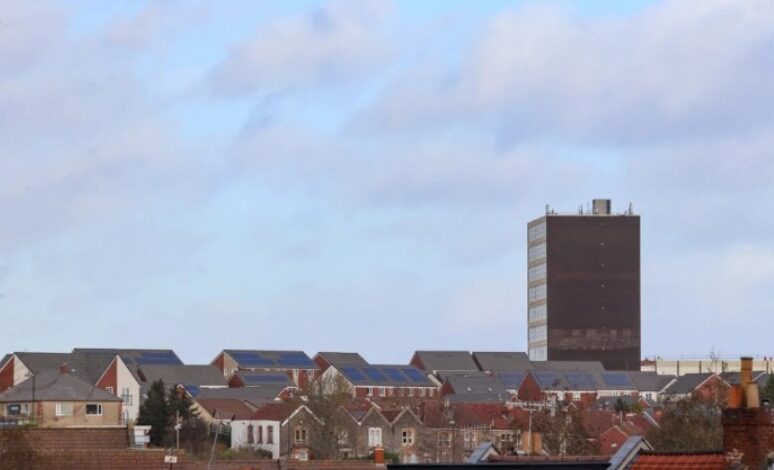How to Choose the Best Solar Panel System for a Multi-Family Home

Choosing the best solar panel system for a multi-family home can seem challenging, but it’s worth it. Solar panels offer great environmental benefits and can save you a lot on electricity bills. As solar energy becomes more popular, especially in multi-family homes, there are more options and incentives available. One provider, Soly, stands out among solar providers for its excellent service and competitive pricing. With the right information, selecting the perfect solar panel system can be straightforward and rewarding.
Understanding Solar Panel Systems
Basic Components of a Solar Panel System
A solar panel system has several key parts. Solar panels capture sunlight and turn it into electricity. Inverters change the electricity from DC to AC, which is what homes use. Mounting systems keep the panels in place on your roof. Some systems also include battery storage to save extra power for later use. Each part plays a crucial role in making the system work efficiently.
Types of Solar Panels
There are three main types of solar panels: monocrystalline, polycrystalline, and thin-film. Monocrystalline panels are very efficient and last a long time, but they cost more. Polycrystalline panels are cheaper and slightly less efficient. Thin-film panels are flexible and lightweight, making them good for some specific applications, but they are generally less efficient and durable. Choosing the right type depends on your budget and energy needs.
Assessing the Feasibility
Evaluating Roof Space and Orientation
Before installing solar panels, you need to check your roof’s size and shape. A larger roof can fit more panels, which means more electricity. The direction your roof faces is also important; roofs that get more sunlight during the day are better for solar panels. Use tools to check for any shading from trees or buildings that might block the sun.
Structural Considerations
Your roof must be strong enough to hold the weight of solar panels. Some roofs may need extra support. You also need to make sure the installation meets local building codes and regulations. Check with your local authorities to see what permits and inspections are required. Following these steps helps ensure a safe and effective solar panel installation.
Energy Needs and Usage
Calculating Energy Consumption
To figure out how many solar panels you need, start by looking at your past electricity bills. This gives you an idea of how much energy you use. Think about any future changes, like adding electric cars or appliances, which might increase your energy use. Knowing your energy needs helps you choose a system that can meet them.
Determining System Size
Once you know your energy needs, you can decide how big your solar panel system should be. The number of panels and the system’s capacity in kilowatts (kW) are based on how much electricity you want to generate. More panels mean more power, but also more cost. Balancing your budget and energy needs is key to choosing the right system size.
Financial Considerations
Upfront Costs and Financing Options
Solar panels have upfront costs for equipment and installation. However, there are financing options to help manage these costs. You can get loans specifically for solar installations or look into leasing options. Some programs let you pay for the system over time with little or no initial payment. Exploring different financing methods can make solar panels more affordable.
Return on Investment (ROI)
Solar panels are an investment that pays off over time. Calculate the payback period to see how long it will take to recoup your costs from savings on electricity bills. Over the system’s lifespan, you can save a significant amount of money. These long-term savings make solar panels a smart financial decision for many families.
Incentives and Rebates
There are many incentives and rebates available to help reduce the cost of solar panels. The federal government offers tax credits, and many states have their own incentives. Local utility companies often provide rebates to encourage solar panel installations. Taking advantage of these incentives can lower your overall costs and improve your return on investment.
Choosing a Solar Panel Provider
Evaluating Providers and Installers
When choosing a solar panel provider, consider their experience and expertise. Look for providers who have been in business for a while and have good customer reviews. Soly, for instance, is known for its quality service and satisfied customers. Reading testimonials can give you an idea of what to expect.
Comparing Quotes and Proposals
Get quotes from several providers to compare costs and services. Look for a detailed breakdown of the expenses, including equipment, installation, and any additional fees. Check the warranties and guarantees they offer. Choosing a provider with a strong warranty can give you peace of mind.
Checking Certifications and Accreditations
Ensure your installer is certified and accredited. Look for certifications like NABCEP, which ensures they have the necessary training and expertise. Also, check if they have the required local licenses and insurance. Working with certified and accredited providers ensures a professional and reliable installation.
Installation Process
Pre-Installation Steps
Before installation, a site assessment is needed to evaluate your roof and energy needs. You’ll also need to obtain the necessary permits and approvals from local authorities. This process can take some time but is crucial for a smooth installation.
Installation Timeline
The actual installation of solar panels typically takes a few days. However, the overall timeline can be longer, depending on factors like the permitting process and weather conditions. Understanding the timeline helps you plan better and set realistic expectations.
Post-Installation Inspections and Testing
After installation, the system must be inspected and tested to ensure it works correctly. Quality checks verify that everything is installed properly and safely. The system is then tested to confirm it’s generating the expected amount of power. This final step is essential for a successful installation.
Maintenance and Monitoring
Routine Maintenance
Solar panels require minimal maintenance, but regular cleaning and inspections are necessary to keep them working efficiently. Dust, dirt, and debris can reduce their effectiveness. Check the components for any signs of wear or damage and address any issues promptly.
Monitoring System Performance
Monitoring tools help you keep track of your solar panel system’s performance. These tools provide real-time data on energy production and system health. By monitoring performance, you can ensure your system is operating at its best and catch any issues early.
Troubleshooting Common Issues
Sometimes, problems can arise with solar panel systems. Common issues include reduced power output or inverter problems. Knowing how to troubleshoot these issues can save you time and money. However, if you’re unsure or the problem persists, it’s best to call a professional for help.
Your Takeaway
If you’re considering solar panels for your multi-family home, now is the time to act. Research your options, get quotes from reputable providers, and take advantage of available incentives. By investing in solar energy, you’re making a positive choice for your future and the environment.



